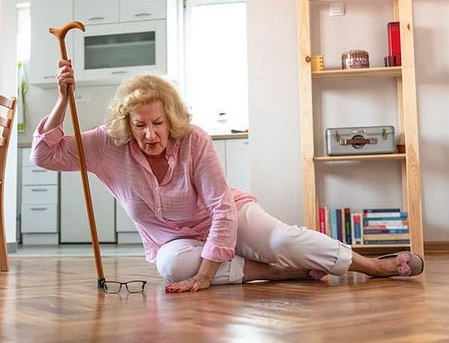
Mobility disability is the leading type of incapacity in the United States and a key contributor to a person’s loss of independence.
According to a recent study of 5,735 ambulatory women aged 63 years and older, one in four women over age 65 is unable to walk two blocks or climb a flight of stairs.
The study was conducted by a team of scientists led by Dr. Nicole Glass at the Herbert Wertheim School of Public Health and Human Longevity Science, University of California, San Diego. The study is published in JAMA Network Open, on February 1, 2021. (See a summary of the study here.)
The researchers followed the women (mean age, 78) for up to six years. Participants wore a research-grade accelerometer for seven days to obtain accurate measures of their physical activity.
The researchers found that even light-intensity physical activity, e.g., shopping or a casual walk, can protect mobility in older women. Those who spent the most amount of time doing such activities were 46% less likely to experience loss of mobility over a 6-year period. While obese and non-obese women all reduced their risk of mobility disability, the benefit was strongest among women with a body mass index (BMI) of less than 30.
Exercise can be as simple as walking.
Walking requires no special equipment, other than a pair of good walking shoes. And it’s free. In fact, experts all say walking is one of the best exercises. Click here for what walking for just 20 minutes does to your body.
Here are 10 reasons why exercise is good for us:
(1) Regular aerobic exercise boosts your immune system so that your body better fights illness caused by viruses and bacteria, by:
- Helping blood get around your body more efficiently, which means germ-fighting substances get where they need to go.
- Sunlight may energize special cells in your immune system called T-cells that help fight infection.
- Trees and vegetation make phytoncides and other substances you breathe in that seem to bolster your immune function. (MedicineNet)
(2) Regular exercise can reduce your risk of severe COVID-19. (CNBC)
(3) Exercise is good for diabetics (Type 2) by increasing insulin sensitivity and the body’s ability to use glucose as energy. As James G. Beckerman, MD, a cardiologist in Portland, Oregon, says: “In type 2, exercise helps improve insulin resistance. The end result is lower blood sugars.” (Everyday Health)
(4) Exercise is good for our bones: Weight-bearing exercises help build strong bones and prevent osteoporosis.
(5) Dancing (to music) can halt the progression of Parkinson’s disease, i.e., stop the disease from worsening. (Medical News Today)
(6) Exercise helps prevent you from falling by building your lower-body strength. See my post, “Test your balance!”
(7) Exercise is good for our mental health by keeping your brain healthy and protecting it against depression and anxiety (Neuroscience News). See also 8 ways exercise changes your brain (WebMD).
(8) Regular exercise reduces your risk of getting senile dementia, including Alzheimer’s (PubMed; WebMD).
(9) People who walk every day think better, more clearly and more creatively. (Eat This)
(10) Exercise helps you live longer. Exercise is 1 of 3 habits of long-living people. (CNBC)
So put on your walking shoes, step outside, and WALK!
~E
